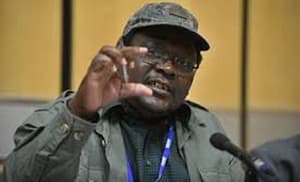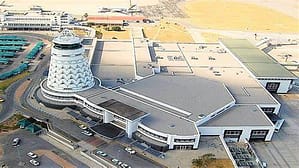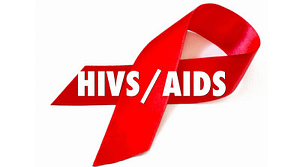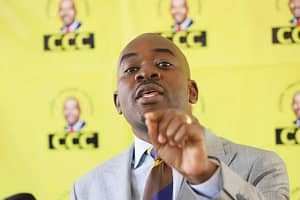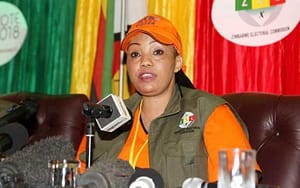Unity Accord is meaningless to ordinary Zimbabweans, Magaisa
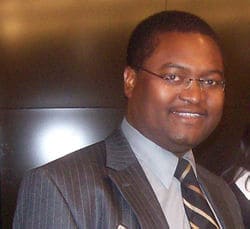
Alex Magaisa
By Alex T. Magaisa
Sixteen observations regarding the Unity Accord
1. How national is the Unity Accord?
22 December is a national holiday to mark Unity Day in Zimbabwe. While it is presented as a national affair, it is essentially an inter-party agreement between the ruling party and the main opposition party of the 1980s: ZANU PF, led by Robert Mugabe, and PF ZAPU, led by Joshua Nkomo. This agreement came seven years after Zimbabwe achieved its independence from British colonial rule in 1980. It was an agreement between political elites of the two political parties which excluded other political players. Nevertheless, the legacy of the Unity Accord cannot be ignored and the circumstances of its consummation warrant examination. These are just major points for further reflection and investigation.
2. Product of Coercion
The Unity Accord was a product of coercive force by ZANU PF against PF ZAPU between 1982 and 1987. The most egregious violence was during Gukurahundi, the military operation during which an estimated 20,000 people were killed in Matebeleland and the Midlands regions. Gukurahundi was executed by the state principally through the agency of the notorious Fifth Brigade and other state security agents. It was carried out ostensibly to fight dissidents who were operating in the regions. By all accounts, the response of the state was disproportionate and excessive. By the time PF ZAPU went into negotiations with ZANU PF in 1985, it had already been battered into submission. In the end, ZANU PF toyed around with PF ZAPU, making its leaders look desperate for accommodation. There are important lessons here for current and future opposition parties.
3. Nkomo’s exile
Four years before the Unity Accord was signed PF ZAPU’s leader, Nkomo was forced to flee the country in 1983 fearing for his life. The then Minister of Home Affairs, Herbert Ushewokunze took pleasure in mocking Nkomo by alleging that he had skipped the border into Botswana disguised as an old woman. It was false but ZANU PF politicians took great joy at deriding the man widely known as Father Zimbabwe. At the time they had constructed a narrative that cast him as the Father of Dissidents. By the time he returned from self-exile and contested the 1985 elections, ZANU PF had severely reduced Nkomo’s options. The result was that PF ZAPU effectively got consumed by ZANU PF.
4. Dabengwa, Masuku and other detainees
PF ZAPU stalwarts including former ZIPRA commanders, Dumiso Dabengwa and Lookout Masuku were detained in 1982 after the government announced the discovery of arms caches on ZAPU-owned property. Although they were acquitted of the treason charges Dabengwa and Masuku were kept in jail after the government re-arrested them. Lieutenant General Masuku, who was second in command of the integrated military when he was detained later died in 1986 just after he had been transferred from prison to the hospital. He effectively died in the hands of the state. Dabengwa and other ZAPU politicians were eventually released in early December 1986 as part of negotiations for the Unity Accord. The release of Dabengwa was a major step in the negotiation process.
5. Triumph of ZANU PF
Politically, the Unity Accord represented a triumph for ZANU PF against a longstanding political rival but it also did much to undermine the young country’s nascent democracy. The agreement was skewed disproportionately in favour of ZANU PF. Most observers agree that ZAPU was effectively swallowed by ZANU PF. The view is most aptly captured by one eminent scholar, Prof. Sabelo Ndlovu-Gatsheni who wrote in a 2008 article: “The Unity Accord that was signed between PF-ZAPU and ZANU-PF on 22 December 1987 was nothing less than a surrender document where the PF-ZAPU politicians threw in the towel and allowed PF-ZAPU to be swallowed by ZANU-PF”. This is a view that is shared by many who believe PF ZAPU effectively succumbed to the force of ZANU PF.
6. Annihilating the opposition
Significantly, it also ended the most serious opposition that ZANU PF had faced since independence. Without PF ZAPU, ZANU PF had free reign across the country, including the Matebeleland constituencies where it had performed dismally in the previous elections. The ZAPU element gave ZANU PF the national reach that it previously lacked. However, it also diluted the opposition. At the time, ZANU PF was hellbent on establishing a one-party state. Indeed, one of the terms of the Unity Accord was that “ZANU PF shall seek to establish a one-party state in Zimbabwe”. This did not work out in the end, thanks to both internal and external opposition to the idea. But ZANU PF had managed to annihilate its most serious opposition by co-opting it. If it sounds familiar, you are paying attention to history.
7. End of a historical power struggle
7.1 From a historical perspective, the Unity Accord also marked the end of a power struggle between the two parties that had dominated politics since their formation in the early sixties. ZAPU was the older of the two parties having been formed in 1962 under the leadership of Nkomo. ZANU arrived a year later as a breakaway faction under the leadership of Reverend Ndabaningi Sithole. Although they were fighting a common cause, the two parties were bitter rivals. There had been efforts to get them together during the liberation struggle, mainly from the Organisation of African Unity and the Frontline States, but any alliances had been temporary at best.
7.2 A mixture of this rivalry and personal ambitions prevented an earlier effort to get the two parties to contest the first democratic elections in 1980 together as the Patriotic Front. Although there was a hiatus when Robert Mugabe formed a broad-based unity government when ZANU PF won the elections, the rivalry soon resumed during the efforts to integrate the two liberation armies into the national army and this escalated during Gukurahundi. With control of the state and the apparatuses of violence, ZANU PF prevailed and effectively annihilated PF ZAPU. This complete annihilation of a political rival was given a civil face as the Unity Accord, which now celebrated as “national unity”.
8. Amnesty and Impunity
8.1 The Unity Accord is credited with bringing violence to an end, but it also left many unresolved questions. There was a grant of general amnesty as part of the agreement. It excused not just the dissidents but also state agents who had committed atrocities during that period. The grant of amnesty continued a culture of excusing human rights abusers which was prevalent in Rhodesia and significantly, it is a culture that persists to this day. If the Unity Accord brought peace, it was also at the expense of accountability.
9. An elitist pact
9.1 The Unity Accord was an elite deal negotiated by political elites and largely benefitted the elites. Although the end of hostilities and violence was welcome in the affected regions, the elites struck a deal that ignored the interests of the public whose grievances remain unresolved. There was no consultation with the affected people. The deal included nothing about the thousands of victims who were murdered or the survivors of Gukurahundi. To this day, relatives do not know where the remains of their loved ones are buried. There was no effort at creating platforms for truth-telling or even providing for compensation. There was no provision for constructing memorial sites or helping survivors in their recovery and rehabilitation from the trauma. As Ndlovu-Gatsheni aptly put it in his 2008 article, “The bitterness and the memory of having lost family members, relatives and friends did not go away with the Unity Accord”.
9.2 Instead of acknowledging this wrongdoing, successive ZANU PF governments have chosen to either sweep the issues under the carpet or to direct processes in a manner that best suits their interests. No lessons were learned from these weaknesses of the Unity Accord because 20 years later another elitist deal, the Global Political Agreement of 2008 between ZANU PF and the MDC parties also left victims and survivors of political violence in the cold.
10.On the road to a One-Party State
10.1 The Unity Accord was part of the political and legal process of consummating a one-party state in Zimbabwe which meant the repudiation and radical transformation of a critical pillar of the Lancaster House Constitution (the name given to Zimbabwe’s independence constitution which was negotiated at Lancaster House in London). Nine days after the signing of the Unity Accord, the infamous Constitutional Amendment (No. 7) 1987 became law, consigning the Westminster-style of government to the dustbins of history. Mugabe became the Executive President while the ceremonial head under the Westminster-style government, President Canaan Banana was retired. Nkomo became a Senior Minister while the ground was being prepared for his ascendancy as one of the Co-Vice Presidents together with Simon Muzenda. If negotiations towards the Unity Accord were the political process, Constitutional Amendment No. 7 was the parallel legal process that was cementing Mugabe’s and ZANU PF’s constitutional dominance.
10.2 The start of the executive presidency in Zimbabwe is one of the landmark events in the country’s march towards authoritarian rule. Not even the historic Constitution of 2013 was able to undo the damage that was created by the establishment of the Executive Presidency, which remains at the centre of the governance system. The few voices that challenged the Executive Presidency in 1987 were regarded as heretics at a time when the Unity Accord was the flavour of the season.
11.A hard-sell
11.1 Both Mugabe and Nkomo did not have an easy time selling the Unity Accord to their lieutenants. Mugabe’s lieutenants in government did not want to lose their places to new arrivals from ZAPU while Nkomo struggled to persuade his subordinates to come under ZANU PF, especially given the skewed nature of the deal. Dabengwa was skeptical of a deal which was an “incorporation of ZAPU into ZANU” a report in the Christian Science Monitor in December 1986.
12.What’s in a name?
12.1 One of the most contentious issues during the negotiations was the name of the united party. One of the most detailed accounts of the Unity Accord negotiations is a chapter in Turmoil and Tenacity which was edited by former President Canaan Banana. It was written by Willard Chiwewe, a former senior civil servant who performed secretarial duties in the committee meetings. “… the question of the new party’s name was to become the major issue of difference and a subject of protracted negotiations between Zanu and Zapu negotiators, as well as between the presidents themselves,” writes Chiwewe.
12.2 ZANU PF insisted on the use of its name while PF ZAPU negotiators at first proposed a compromise of Zanu-Zapu. They also had alternative names such as Zimbabwe Patriotic Party (ZPP) and Zimbabwe National Party (ZNP). At one point, Zapu negotiators proposed a new logo, which included the conical tower of the Zimbabwe Ruins and a cockerel at the top plus two black bulls on either side of the tower. ZANU PF negotiators flatly rejected these proposals. Another time there was a dispute as to whether to put the abbreviation PF in brackets or to have a dash/hyphen between them and the name ZANU PF. Nkomo and PF ZAPU proposed to add the dash/hyphen but Mugabe and ZANU PF rejected this.
12.3 This protracted dispute over the name was more than symbolic. For PF ZAPU leaders, they feared it represented capitulation in the eyes of their supporters, while for Zanu, agreeing to change their name would reflect weakness and succumbing to a party they had defeated and was a minority. The chairman of the Unity Committee, Maurice Nyagumbo took a particularly hard-line approach, refusing to give any ground to PF ZAPU, which seemed to be bending over backward to be accommodated. In the end, ZANU PF got what it wanted. It had declared from the beginning that two things were non-negotiable – that Mugabe would be the leader of the new party and that the new party would carry the ZANU PF name. That is precisely what it got and PF ZAPU capitulated.
12.4 One of the gains for PF ZAPU was the demand for political amnesty, but ZANU PF was already pardoning its members anyway, so the demand was also in ZANU PF’s interests. PF ZAPU’s proposal for two Vice Presidents, an arrangement that accommodated Nkomo in the presidency was also accepted. However, the notion of a First and Second Vice President which PF ZAPU had also proposed was not included. This is the genesis of Zimbabwe’s dual vice-presidential system, which, as if to demonstrate normalized power and institutions has also spread to the opposition parties. It is arguably a formula that has become normalized in our political system.
13.A long process
13.1 Although the Unity Accord was signed on 22 December 1987, the negotiations began in earnest in September 1985 following a call by the then president, Canaan Banana for talks between the major protagonists. According to Chiwewe, the first formal meeting of senior officials from both parties was held on 16th September 1985. The Unity Committee and another called the Committee of Twenty comprising senior officials from both parties held a series of meetings throughout two and a half years. The party presidents also held several meetings. Interestingly, a lot of the discussions appear to have focussed on issues such as the name of the party, over which the positions of the two parties were opposed.
14.President Banana’s contribution
The role of President Banana in the process cannot be overstated. He was the mediator who used his diplomatic skills and the respect he commanded on both sides to get them back together at the negotiating table. He also produced proposals to break the impasse between the parties. “The role of Canaan Banana in the negotiations is noteworthy,” says Chiwewe. “It was because Canaan Banana was State President that Joshua Nkomo often appealed to him when differences loomed among the negotiators. On the other hand, it was because he was president and a member of Zanu that Robert Mugabe had faith in him as a mediator. His personality, especially his humility and affability contributed immensely towards the ease with which the two leaders consulted him”.
15.Conflation of party and state
However, the role of Banana is also important for another reason: it reflected the beginnings of the conflation between party and state. Some negotiators objected to the role that he was being given on the ground that as State President, he was supposed to be above politics. For example, one of the draft agreements had required him to make the initial announcement of the agreement between the two leaders. Despite the objections, it is clear that he played an important role in the negotiations of what were essentially political party talks that were outside the parameters of state affairs. Indeed, the venue of the signing of the unity agreement between two political parties was the State House, which was President Banana’s choice. According to Chiwewe’s account, Mugabe “agreed to the venue especially to give Canaan Banana “an excellent send-off”. It was his last big act before he officially departed State House for the last time just a week later. But the seeds of this seamless movement between the party and the state had also been sown.
16. The Leadership Code
One of the terms of the Unity Accord is that “the leadership of ZANU PF shall abide by the Leadership Code”. The Leadership Code contains rules and principles by which leaders of ZANU PF committed to living a frugal lifestyle free of the trappings of office. They would limit the number of properties they could own and their investments. Basically, it’s the kind of code that was written by the new rulers of Animal Farm but which they soon discarded as they moved into Farmer Jones’ old farmhouse. If ZANU PF leaders had read George Orwell’s classic, they were simply putting it into practice after they took power in 1980. As in Animal Farm, ZANU PF leaders did not let the Leadership Code stand in their way to great wealth. This accumulation of wealth has reached extraordinary levels as they use corporate vehicles to hoover state assets whenever and wherever they create an opportunity for themselves and their associates. So much for the Unity Accord. The clause is still there, but who cares?
Conclusion
The key negotiators on the ZANU PF side were: Maurice Nyagumbo, Eddison Zvobgo, Emmerson Mnangagwa, and on the PF ZAPU side there was Joseph Msika, John Nkomo, and Naison Ndlovu. Advocate S.K. Sibanda also joined ZAPU negotiators while Sydney Sekeramayi and Nathan Shamuyarira sometimes stood in for ZANU PF. Interestingly, the Mnangagwa and Sekeramayi, who were involved in defence and security ministers and therefore directing the coercive apparatus of the state were also sitting at the negotiating table pursuing unity talks.
History reveals not only the paths that we have travelled but who did what and why. More significantly, if we pay attention to it, it can provide important lessons for the present and the future. If it has a habit of repeating itself, it may also be because people do not pay enough attention.
–Alex Magaisa is a law lecturer at Kent University in UK
